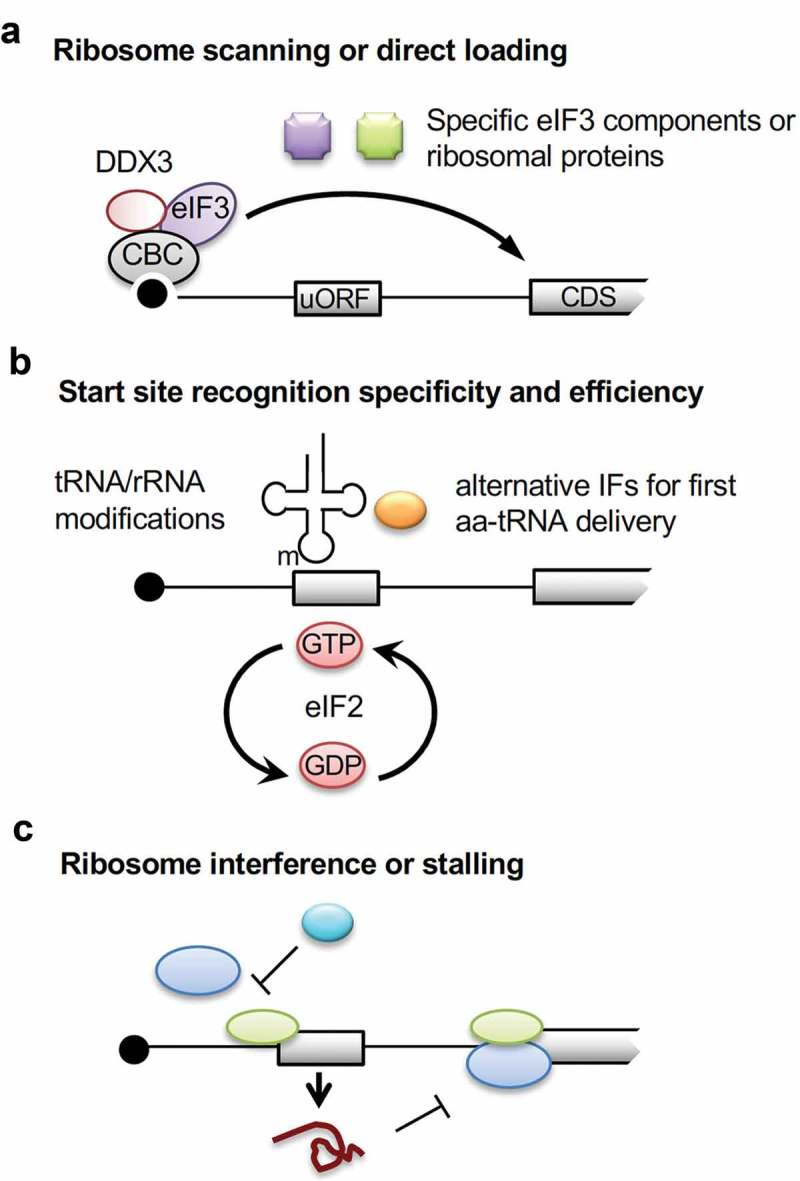Figure 5.

Advanced mechanisms of uORF-mediated translational control.
(a) In the presence of a high level of DDX3, the nuclear cap-binding complex (CBC) that remains on uORF-containing mRNAs recruits the eIF3 or its subunits for preferential translation of CDS. Alternatively, specific eIF3 or ribosomal subunits may participate in translational regulation of uORF-containing mRNAs. (b) Modification of tRNA/rRNA or usage of alternative initiation factors such as eIF2A and eIF2D to deliver the first aminoacyl (aa)-tRNA may alter the specificity and/or efficiency of start site recognition and therefore modulate uORF-mediated translational control. (c) Several initiation factors such as eIF3, eIF5B and eIF6 modulate uORF-mediated translation possibly via regulating the kinetics of ribosomal subunit joining. uORF-encoding peptides may stall ribosomes and prevent translation of downstream CDS (bottom panel).
